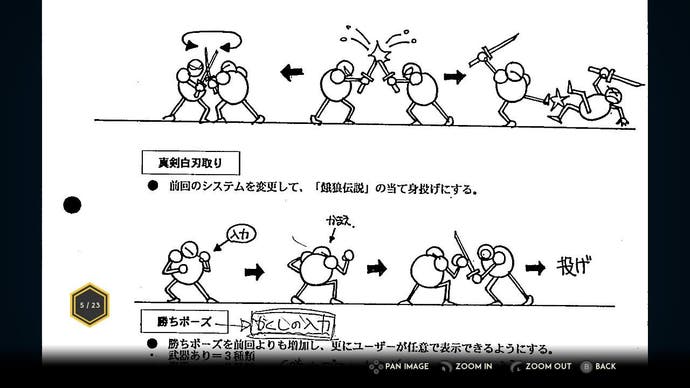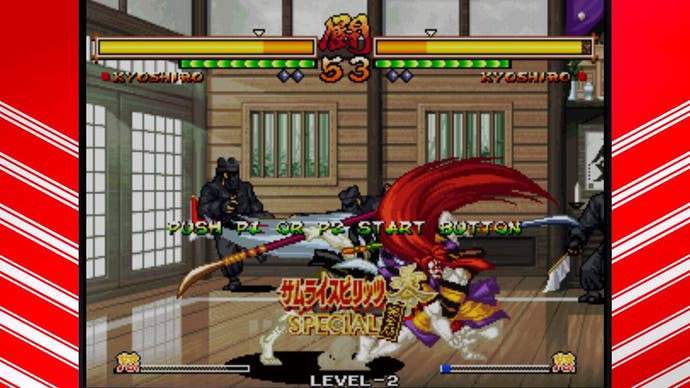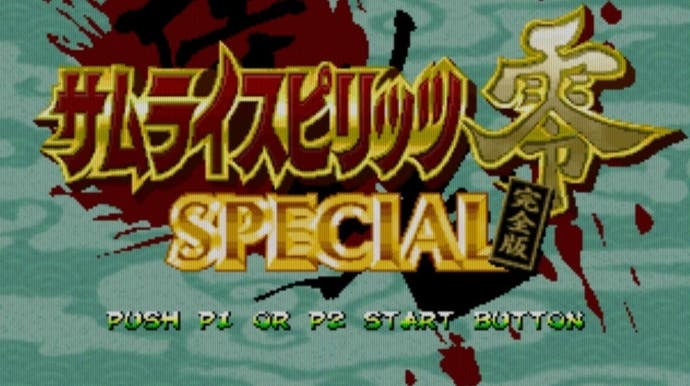The gaming archaeologist and his quest for a Neo Geo holy grail
How an unreleased SNK arcade game found its way out into the world again.
In Tatsuno, a small town nestled within Japan's central alps, there's a quite remarkable place. Takai Shokai's been running for over 40 years, the work of one man operating from a warehouse stacked with row upon row of arcade boards cataloguing the entire history of commercial video games in Japan. It's as close to comprehensive as you could hope, and it's come together almost by chance.
"He's a businessman who has been doing this since the 70s," game researcher, historian and writer Brandon Sheffield for Digital Eclipse tells me. "It's just his business, you know - he's out in this middle of nowhere place where it's cheap to get space, and it's just him and one assistant. And it's this incredible archive of knowledge that I really hope can be documented at some time. Who knows what secrets are lying there?"
Brandon found his way there a few years back while pursuing his own business, at that point working alongside SNK for its 40th Anniversary Collection and digging into the company's rich - and often obscure - history and presenting it digitally in these expansive compilations. There are arcade flyers, developer interviews and details on games that have been long forgotten.
"I've been kind of calling it game archaeology," he says of his vocation. "Mostly what I do is I go to Japan, or wherever else is needed to go to, and then talk to the people that worked on these games and basically try to get as much information as I can."
Which is how he found himself in Tatsuno, a town with a population of no more than 20,000 and far, far away from any tourist trail. While staying with a friend in Kyoto, Brandon got word that the warehouse might have an extremely rare Space Micon board. "It's part of their Micon kit series of brick breaking games, which are the first games that SNK put their name on," he says. "It's possible that they released games before that, somehow, but these are the first ones they put their name on.

"Since it was from 1979, we assumed it would have just transistors and capacitors to make it still function. But actually we found that it has a deployable CPU, it has regular JAMMA connections so that it could go in any machine. This is all stuff that we didn't know and wouldn't have known if I hadn't gone there. This is all really minor stuff for a game that nobody cares about. But that's the kind of stuff that I get really excited about, because nobody knew about this before. A couple people might have played it, but they'd forgotten about it. It's not a game that made a big impression, but it's a part of SNK's history."
SNK's recently turned its attention to a more specific part of its own history, with the help of Brandon. The Samurai Shodown NeoGeo Collection takes on one of the company's most iconic series, and certainly one of its most cherished - these are fighting games with the style and swagger of SNK in its absolute pomp, that iconic 2D artwork ensuring they haven't aged a day. They're the centrepiece, though also staking a claim for top billing is the included museum with some 2000 images sent by SNK to Digital Eclipse, chronicling in fascinating detail the evolution of the series. There's character art, concept art, ephemera such as arcade flyers and never-before-seen design documents that make the collection pretty much essential not just for fans of Samurai Shodown but for anyone with an interest in games development in 90s Japan.
A large quantity of which is a result of Brandon's particular brand of archaeology. "SNK has a room in their current building where they store in a climate controlled area - all of the packages of games and also all of the original artwork that they have," he tells me of one particular adventure. "There are paintings that would have been on the original Neo Geo boxes. And they're actually like oil paintings. It's really amazing to look at and all the logos are done by hand. There's a wealth of stuff.
Inside, documents are filed away in repurposed old Neo Geo AES game boxes, the room guarded by an enthusiast within the company. "When I went there, my associates at SNK were like you're never gonna get into that room because he's never let anyone in there." It took some persuasion - and proof that Brandon was a fellow enthusiast in the form of his name engraved in the back of the art book for SNK 40th Anniversary Collection's special edition.
The biggest discovery Brandon made during his work on the Samurai Shodown Neo Geo Collection is something else altogether, though - and it's probably best I let Brandon tell the remarkable story in his own words.
"We were able to speak to Kouji Takaya, director of Samurai Shodown 5, who I don't really think anyone has interviewed before. That's partly because Samurai Shodown 5 came about during the grey area SNK period where it was transitioning to various other companies like Playmore and stuff like that.

"So, this guy, he had worked on Samurai Shodown 3 and 4 at least, and I think some earlier ones as well. He quit during the development of Samurai Shodown 4 because he was upset with how things were going. He quit and he was like, I'm never gonna think about Samurai Shodown again. And so he went off and did some other stuff."
Takaya's attempt to get away from it all led to him winding up on a cruise ship in the Bahamas back in 2004, but it seems Samurai Shodown wasn't quite ready to let him go. While onshore checking out what was to be found at the local arcades, he met two young kids begging for some coins to put into their favourite game. "He's like, Okay, I'll give them a couple of coins, so they say hey come play this game with us. They immediately rush around to the other side of this two player game, and he realises it's Samurai Shodown 4.
"He's like, damn it, that game again. And he also realises that the reason they ran around to the side is because only two buttons are working on his side. At first he's like, these kids tricked me! But then he thinks, you know, it's impressive that these kids have been learning to play like this. One of them has had to play with two buttons every time - this game meant enough to them that they were willing to play under these conditions."
Takaya started asking around upon his return to Japan, until one of them put him in touch with a small company called Yuki Enterprise, a specialist in shogi games that had recently got hold of the Samurai Shodown licence. "They didn't really have a development team," says Brandon. "They were calling former Samurai Shodown developers to be like, will you come back and lead a team for us, please? And so they called Takaya. He thought about those kids in the Bahamas who were playing that game of Samurai Shodown 4, and then he was like, yeah, maybe there is a way that I could want to do this."
That's how Samurai Shodown 5 came together, but the story gets really interesting when it comes to the matter of what was set to be the game's third and final update. It's a wild tale that gets wilder yet.
"There's an old rumour that had been going around the internet for a long time that there was some other Samurai Shodown game," explains Brandon. "Basically, there are these six blurry photos of a location test of Samurai Shodown 5 Special, but with a red logo. And there was a lot of speculation and vague first-person accounts of what it was, but nobody actually knew. So you know, we decided to ask Takaya. Do you remember this thing with a red logo? What exactly was that?
"He kind of shifts in his seat. Luckily I had an SNK associate with me. And he's like, no, it's totally okay, you can talk about this. We really want to know. So he explains. It's this thing called Samurai Showdown 5 Perfect edition. And we're like what is that?" What it was, it turns out, was an all-new Samurai Shodown with added story mode and a balance adjustment amongst other additions. What's more, it's a game that Takaya and Yuki Enterprise saw through to completion, only for it to never come out.

"What happened there is Samurai Shodown 5 was an unexpected hit," says Brandon. "In America, it did really well. And so because it did really well, SNK wanted to capitalise on this real quick and they made Samurai Shodown 5 Special within eight months - which was too quick, and it didn't sell as a result. So they had all these extra cartridges laying around, and they all got shipped back to Japan.
"Meanwhile SNK USA requests a third version hoping that maybe that'll do better. But they don't ask SNK in Japan - SNK USA request this of Yuki Enterprise, who just go for it. And they make this with a team of like three or four people - and SNK Japan only finds out about it when it's on location test in an arcade. And they come down there within a few hours of it starting and shut it down. They shut it down so fast that Takaya himself didn't even get to go and see what the fan reactions were - he couldn't get there in time. It's frankly amazing that there are even six photos of it."
What's even more amazing is that a copy still existed. Brandon asked if perhaps Takaya had anything on it, upon which he said he'll go away and find out. A few days later, Brandon received a photo of Takaya holding a Saturn USB controller as he plays the final version of Samurai Shodown 5 Perfect Edition on his laptop, and after some frantic translation work a Neo Geo game that was once the thing or hearsay found its way into SNK's latest comilation.
"When you're doing this kind of work, which I've likened to game development archaeology, this is the holy grail," says Brandon. "I've found information that people didn't have before. And I've unearthed games that aren't currently playable - but this is the first time I've gotten a full, fully unreleased but finished game. It's really very gratifying. It feels like it's all kind of worth it when you get something like that."
It's a remarkable tale, and highlights the remarkable work that goes into Digital Eclipse's recent collections - and of the history that can be found in some unlikely places. Now that Brandon's found his holy grail, though, what's next? "I don't want to get anyone's hopes up," he says. "There are some games that I heard of when I was talking to some folks at a company called Dimps. Throughout their history, they've been kind of bouncing between a developer that put their name on things and a developer that didn't, and they wound up working on a lot of Neo Geo Pocket Color games. I was talking to some folks that were former Dimps employees. And I was like, are there any big Neo Pocket games that you have? Or that didn't come out that you know of? And one guy's like, well, there's a bunch of them in a drawer somewhere..."

